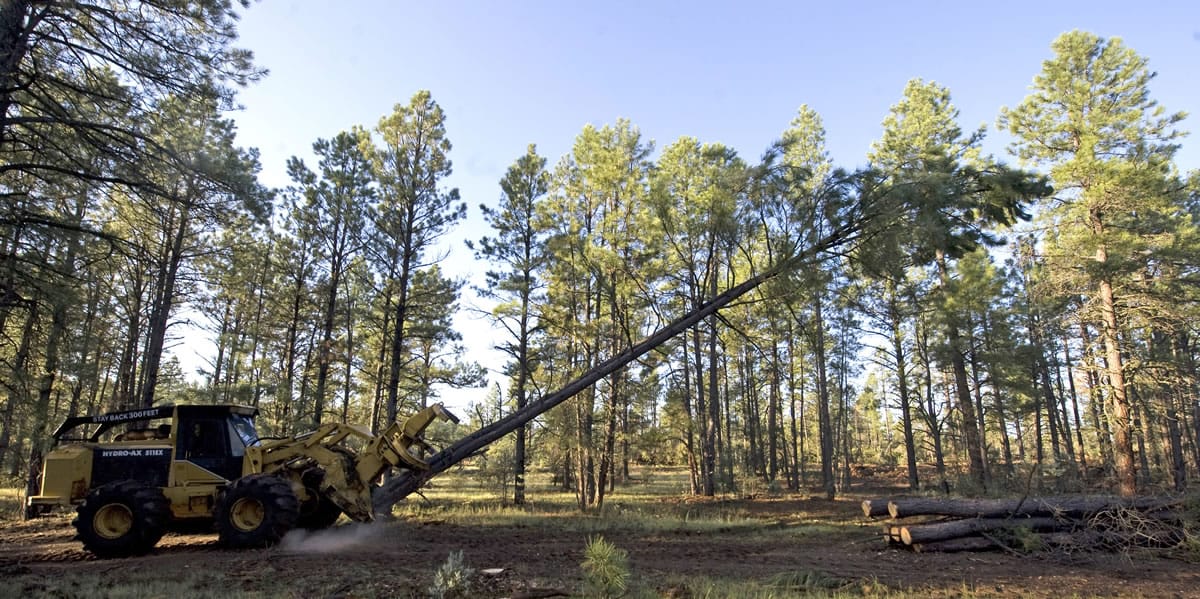GRANTS PASS, Ore. — An organization that certifies lumber and paper products as environmentally sustainable has upgraded its standards, but critics say the Sustainable Forestry Initiative standards and enforcement remain weak.
SFI President and CEO Kathy Abusow says the upgrade released Wednesday came out of a regular five-year reassessment, and tightens standards on clearing large areas of forest, damaging wetlands, and using pesticides.
The revision comes as the environmental group ForestEthics issued a report comparing SFI certification audits in Canadian forests with audits by the Forest Stewardship Council, the other leading forest certification organization. The report found SFI audits were less rigorous than FSC audits and called for fewer corrections to forest practices.
“To date, the SFI Forest Management standard has not been a sufficient measure of ‘responsible’ or ‘sustainable’ forestry, and has allowed and endorsed highly environmentally and socially damaging and controversial practices,” Jim Ace of Forest Ethics said in an email.
The group has been a longtime critic of SFI, going to far as to file a complaint with the Federal Trade Commission challenging the credibility of the organization. That complaint is pending. Another group, Center for Sustainable Economy, has filed a complaint with SFI against logging practices in Oregon’s Coast Range by timberland owner Plum Creek Timberland.
FSC was created by environmental groups in 1993 after the Rio Earth Summit to use market forces to limit global deforestation. It is widely considered the more rigorous of the two standards. It certifies 400 million acres around the world, and 175 million acres in the U.S. and Canada. The first major publicly traded forest products company in North America to earn FSC certification was Potlatch Corp. in 2005.
SFI was created by the timber industry in 1994 to certify sustainable forests in the U.S. and Canada, but has been independent and nonprofit since 2007. It currently certifies more than 240 million acres of forest in the U.S. and Canada. Weyerhaeuser and Plum Creek Timber Co. are two of the biggest users of SFI certification.
Both organizations also certify that wood taken from certified forests ends up in the products carrying their labels that consumers buy.
Since 2007, the number of products carrying the SFI label has gone from 50 to 6,000, and range from pizza boxes to lumber, Abusow said.
Ben Cashore, professor of environmental governance and political science at Yale University, has been studying the two organizations for 15 years, and is coming out with a report shortly that compares them. In general, FSC has more mandatory requirements to put standards on the ground, such as larger buffers to protect streams, he said. SFI feels mandatory requirements can be a straitjacket that does not produce results, Cashore said, and gives timberland owners greater flexibility to meet sustainability goals.
The two organizations are in intense competition to win adherents, he added.
One major problem for timber companies is that it costs money to implement the standards, which opens the door to cheaper wood products from Asia, where forest practices are less restrictive, Cashore said.



